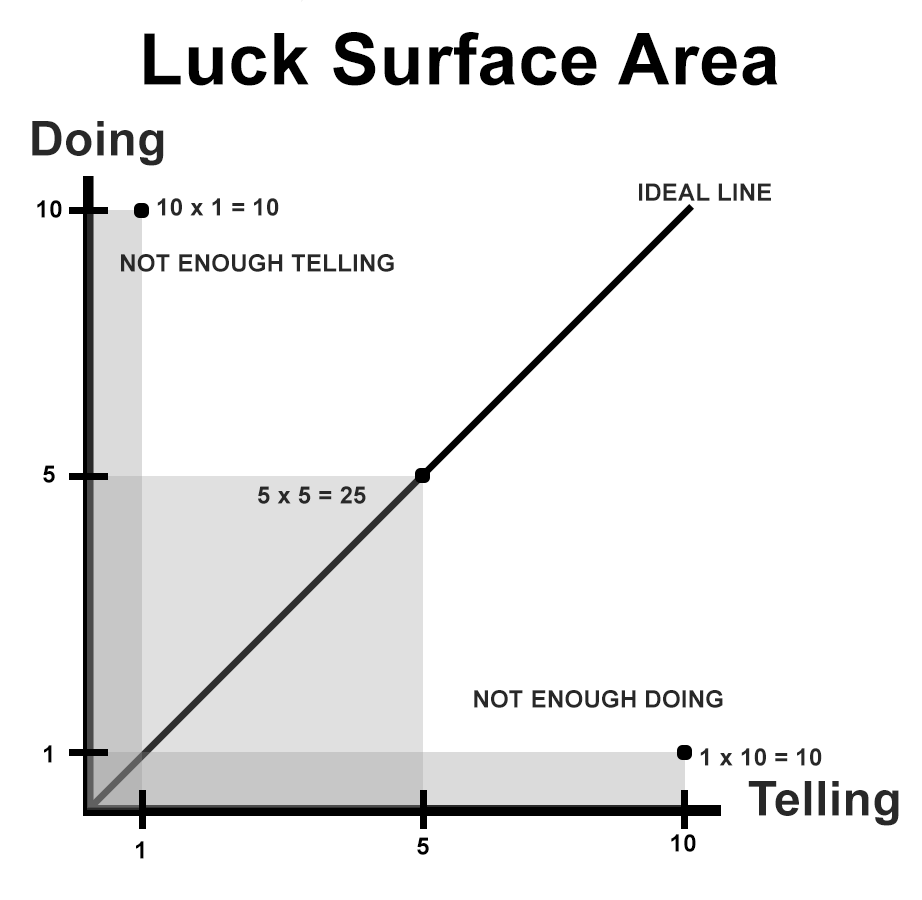Introduction
Luck Surface Area is a thought-provoking mental model that explores the role of luck and opportunity in decision-making and outcomes. It emphasizes the idea that increasing one’s Luck Surface Area, which represents the quantity and quality of opportunities available, can significantly impact success. By understanding this concept and its psychological underpinnings, individuals can make more informed decisions and take proactive steps to expand their Luck Surface Area.
The Psychology of Luck Surface Area
Luck Surface Area is anchored in human psychology, specifically in our tendency to underestimate the role of luck and overattribute success solely to personal qualities or abilities. This cognitive bias, known as the “Fundamental Attribution Error,” leads us to discount the influence of external factors and attribute outcomes primarily to internal attributes. Recognizing the importance of luck in shaping outcomes can help us make more realistic assessments and better navigate decision-making processes.
Examples of Luck Surface Area
- Personal Life Decisions: Consider two individuals with similar qualifications applying for a job. One of them happens to have a chance encounter with the hiring manager, leading to a more favorable impression and ultimately securing the position. While both candidates possess the same abilities, the individual with a larger Luck Surface Area benefited from an unexpected opportunity.
- Business Scenarios: In the business world, luck plays a significant role in the success of companies. For example, a startup that secures a major investor early on may have greater access to resources and opportunities, propelling its growth. Meanwhile, a competitor with equal potential but a smaller Luck Surface Area may struggle to gain similar advantages.
- Public Policy-Making: Luck Surface Area also applies to public policy. For instance, a city that happens to have an abundant natural resource, such as oil, enjoys economic advantages due to factors beyond its control. Meanwhile, a neighboring city with similar potential but lacking that luck-based advantage may face economic challenges.
Mental Biases and Underpinnings of Luck Surface Area
Several cognitive biases contribute to the misjudgment of Luck Surface Area. The “Confirmation Bias” leads individuals to seek evidence that supports their preconceived notions, often overlooking the role of luck. The “Hindsight Bias” distorts our perception of events by making outcomes seem more predictable in hindsight, diminishing the role of luck in shaping those outcomes.
Another psychological underpinning is the “Illusion of Control,” which leads us to believe we have more control over outcomes than we actually do. This bias makes us prone to underestimate the role of luck, assuming that our actions alone determine success or failure.
Identifying and Overcoming the Luck Surface Area Fallacy
To avoid falling prey to the fallacy of Luck Surface Area, consider the following strategies:
- Cultivate Humility and Openness: Recognize the influence of luck in shaping outcomes and embrace a mindset of humility. Acknowledge the role of external factors and be open to the possibilities they present. This mindset allows for a more accurate assessment of the factors contributing to success or failure.
- Expand Networks and Opportunities: Actively seek out new connections and opportunities to increase your Luck Surface Area. Engage in networking events, join professional communities, and expose yourself to diverse experiences. By expanding your network and seeking out new possibilities, you enhance the likelihood of encountering serendipitous opportunities.
- Embrace a Growth Mindset: Foster a growth mindset that embraces challenges, resilience, and continuous learning. This mindset helps individuals adapt and capitalize on unexpected opportunities that arise due to luck. Emphasize personal development and skill-building, increasing your readiness to seize favorable moments.
Conclusion
The Luck Surface Area mental model sheds light on the role of luck and opportunity in decision-making and outcomes. By understanding the psychological biases that influence our perception of luck, individuals can make more rational decisions and actively expand their Luck Surface Area. Cultivating humility, seeking diverse opportunities, and embracing a growth mindset are practical strategies to navigate this mental trap. Ultimately, awareness of the Luck Surface Area concept empowers individuals to make more informed choices, capitalize on opportunities, and increase their chances of success.
